

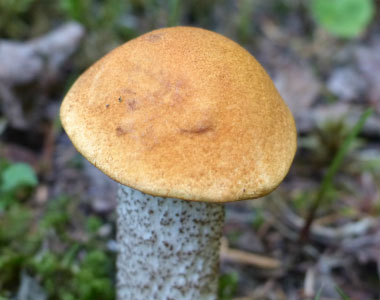
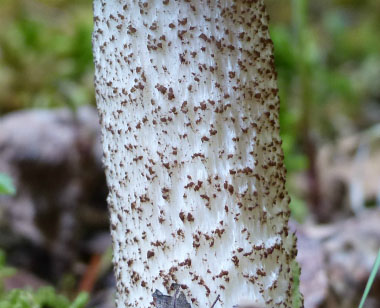
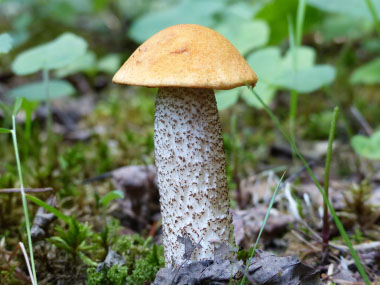
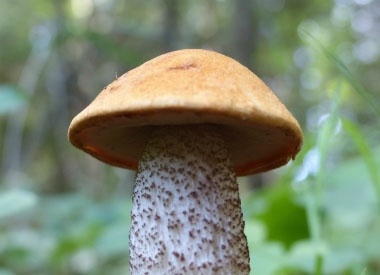
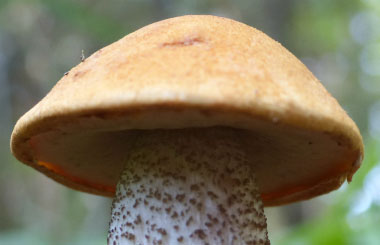
Do not eat any fungi that has not been properly identified by a qualified professional, some are DEADLY when ingested. All edible wild fungi MUST be cooked.
This common bolete can be easily found in forests in which there are mostly deciduous trees, especially birches. Dark-stalked boletes are not a commonly sought-after edible fungi due to the lack of taste or scent. They can be found scattered or solitary.
Type
Distinguishing Features
The caps of dark-stalked boletes can measure anywhere between 7 and 20 cm (3 - 8”) across, are convex, dry, yellow-orange in colour, and hairy to fibril-streaked. The flesh is white, staining grey then black. The flesh discolours when cut, bruised or damaged. Stalks can get to about 3.5 cm (1.5”) in width, firm, are white with many raised black markings called scabers. These scabers are black when young and at maturity, blue or blue-green stains occasionally appear on lower part of the stalk.
Height
10 – 20 cm (4 – 8”).
Habitat
Dark-stalked boletes are generally found in mixed woods near deciduous trees across North America, Europe, and Asia. There is a mycorrhizal association with poplar, birch, and oak.
Spore Print
Spores are brown,spindle-shaped ellipsoids, and smooth.
Season
Approximately July into early autumn.
Gills
Boletes have pores. These pores are small, round, smoky to blackish-brown.
Edibility
Always pick healthy-looking specimens and cook before consuming. Bake in oven or fry dry – added oils or butter will make these mushy. Do not eat in large quantities or frequently. This bolete does not have a distinctive taste nor scent.
Recipes
To support our efforts please browse our store (books with medicinal info, etc.).
Winter Survival Food Handbook

PDF Plant Magazines
Types of Wild Food
Geographic Zones Seasons
Disclaimer
EdibleWildFood.com is informational in nature. While we strive to be 100% accurate, it is solely up to the reader to ensure proper plant identification. Some wild plants are poisonous or can have serious adverse health effects.
We are not health professionals, medical doctors, nor are we nutritionists. It is up to the reader to verify nutritional information and health benefits with qualified professionals for all edible plants listed in this web site. Please click here for more information.
Why Edible Wild Food?
- Food costs are rising
- Free, wild food is readily abundant
- Wild food adds nutrition to your diet
- Wild food can help treat various medical conditions





